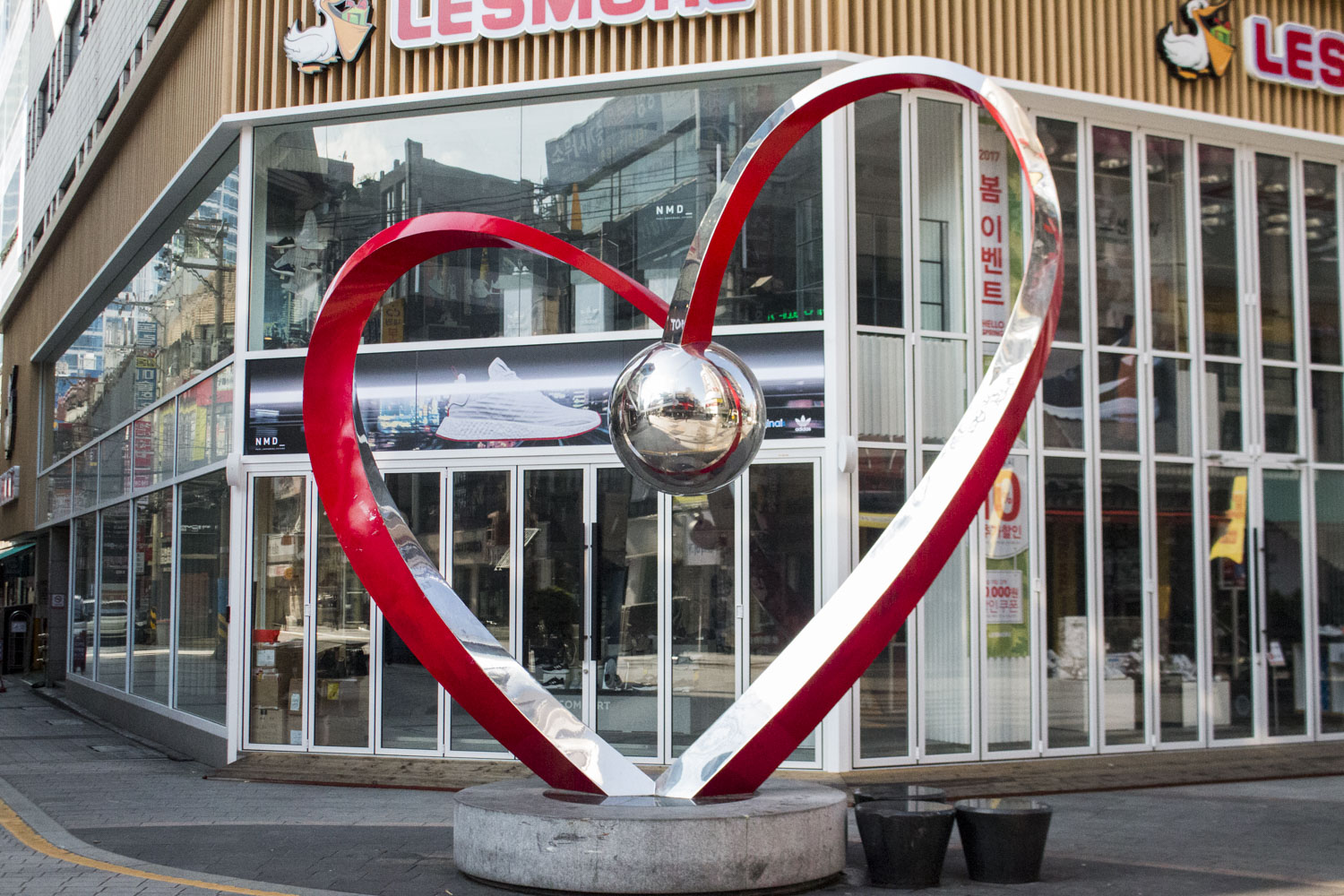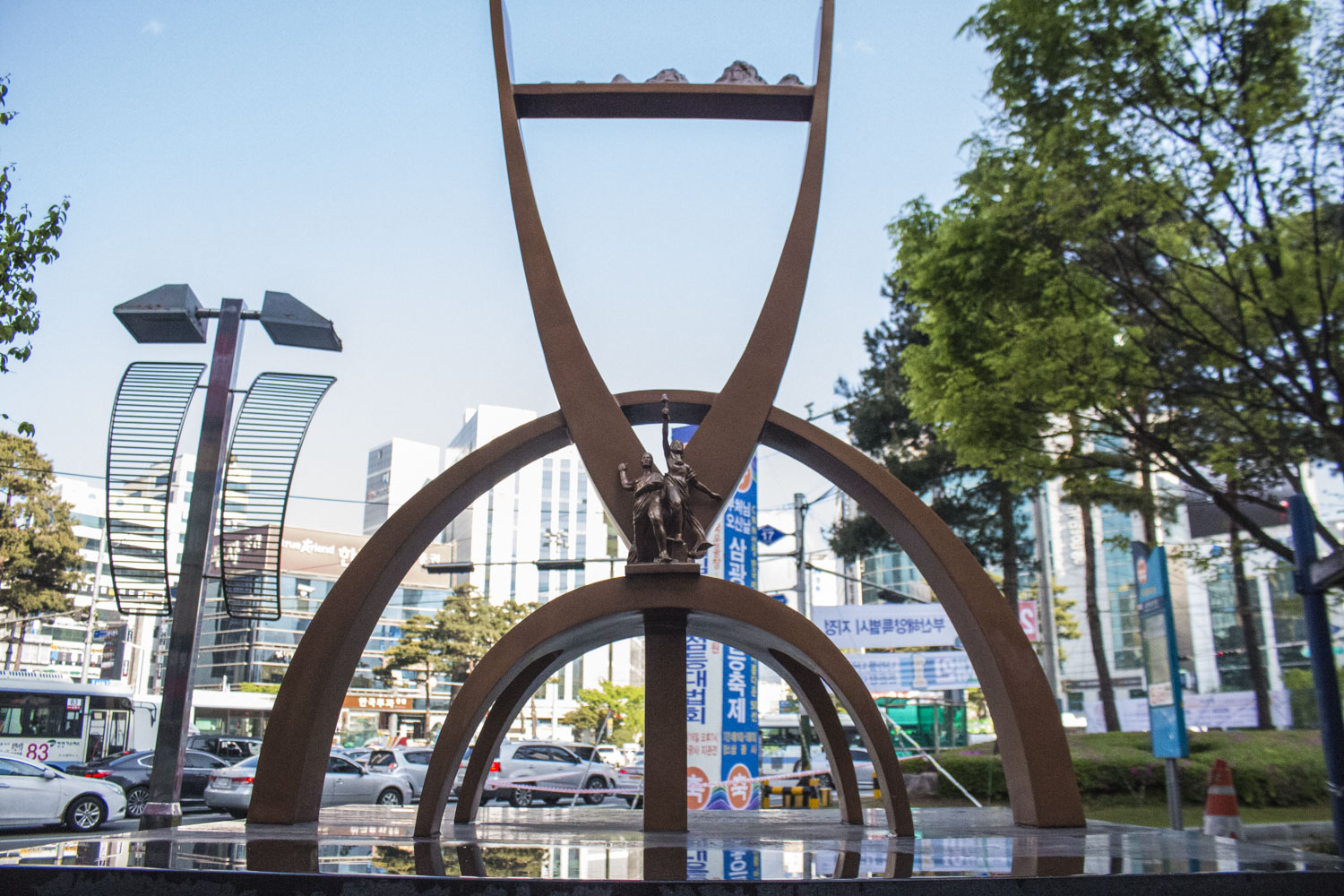Bits of blue paint shown faintly through the haphazard gray above it on one of the steep narrow stairwells that line the Ihwa Mural Village. I had hoped the news reports I read weren't true but the famed mural of koi fish that once swam their way up these stairs had been painted over by an angry resident in the middle of the night in 2016.
While walking through the Ihwa Mural Village I noticed a lot of the same signs that I saw in the Bukchon Hanok Village. Plastered on the sides of walls in various states of decay were pleas to be quiet. So often as tourists we forget that people are living their full lives in the spaces that we exist in only partially.
In 2006, the Ministry of Culture, Sports and Tourism transformed a poor neighborhood in Jongo, Seoul into the Ihwa Mural Village- a new site for art and tourism. I along with many other tourists walked our way up a series of hills to snap picks with these beautiful pieces of art. You can see a couple of examples below. However, with this new beautification came a lot of foot traffic and complaining from local residents prompting angry locals to vandalize not one but two iconic pieces of art.
In addition to the murals, there are a lot of new and cool shops and cafes have sprung up around the increased traffic. One shop has this beautiful view of downtown Seoul- as can be seen below. If I had more than a week in Seoul I definitely would have come back with a book and some tea. There was quiet a crowd when I was there but one owner stated in the Korea Herald that his business was down 35% since the vandalism occurred.
Meandering through the different areas in the mural village I thought back to my home of DC and how pushes to make poor areas economically viable often comes at the expense of local residents. I understand deeply how you can feel unheard as they make your neighbordhood better for everyone but you. I'm not sure whats best on a strucutral policy level but what I do know is that while traveling I hope to give more then I take.
Don't forget to subscribe so you never miss an addition to the Archive!




























